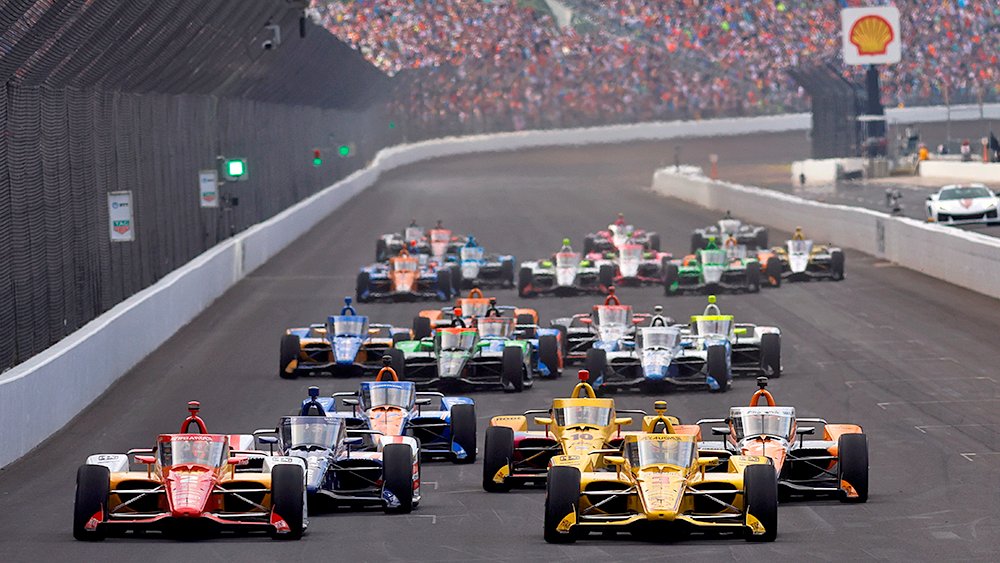Kyle Larson’s Dilemma: New Guidelines for Driver Substitutions in Motorsports
In the ever-evolving world of motorsport, the recent case involving Kyle Larson has prompted significant changes regarding the rules for driver substitutions during major races. Larson, who clinched the NASCAR Cup Series championship in 2021, is set to return to the McLaren project in collaboration with Hendrick Motorsports, driving the iconic #17 car. However, as the 2024 racing season approaches, the potential for scheduling conflicts looms large, particularly with the unpredictable weather that can affect race day events.
During the previous season at the Indianapolis Motor Speedway, Larson faced a frustrating scenario when inclement weather led to a lengthy delay. This delay ultimately resulted in him missing the start of a crucial NASCAR event. In his absence, Justin Allgaier took over the driving duties in Charlotte, yet Larson’s misfortune continued as he was unable to complete a single lap before rain once again curtailed the race.
Looking ahead to 2025, Rick Hendrick, who owns the team Larson drives for in NASCAR, has made it clear that the Charlotte race will take precedence in the event of another scheduling conflict. This situation would necessitate that the Arrow McLaren team seek a substitute driver for Larson’s #17 car. Unlike the previous year, the team is taking proactive measures to address potential overlaps in scheduling.
Tony Kanaan, a celebrated driver with a rich history in motorsports, including a victory at the 2013 Indianapolis 500, has emerged as the leading candidate to fill Larson’s seat if needed. However, Kanaan must adhere to the new guidelines established by IndyCar, which outline the process for driver substitutions in specific circumstances.
New IndyCar Replacement Rules
The updated rules for replacing a driver during the Indy 500 are designed to maintain the integrity of the race while accommodating the realities of multi-series participation by drivers like Larson. Here are the key points regarding these new regulations:
Eligibility for Replacement: A substitution is only permissible if the original driver, in this case, Larson, is simultaneously participating in another major event on the same day, which aligns with the scheduling conflict scenario between the Indy 500 and the NASCAR Coca-Cola 600.
Substitute Driver Requirements: The substitute driver must be an experienced driver approved by IndyCar. They are required to complete a refresher program on the first day of practice for the Indy 500. This program is vital for ensuring that the substitute is familiar with the unique characteristics of the track and the car.
Tire Regulations: Importantly, the tires used during the refresher program will count against the total allocation of 32 tires allowed for each car during the event. This means that teams must be strategic in their tire management throughout the race.
Minimal Adjustments: Changes to the car’s setup during the refresher program will be kept to a minimum. This is intended to maintain consistency in performance and handling as much as possible.
Practice Limitations: After fulfilling the required laps during the refresher, the substitute driver is not permitted to continue practicing for the remainder of that day. This ensures that the original driver has the opportunity to reclaim their seat if they are available.
Starting Position Implications: Once the team officially announces the use of a substitute driver, the original starting position will be forfeited, and the car will start from the back of the grid, following the stipulations laid out in section 8.1.8.6 of the sporting regulations.
- Return of the Original Driver: The original driver can reclaim their position before the race, provided the substitute has not participated in any other sessions beyond the refresher program. However, if this occurs, the car will still start from the back of the grid.
These new guidelines represent a significant shift in the approach to driver substitutions within IndyCar. They acknowledge the increasing trend of drivers participating in multiple series, which has become a common aspect of modern motorsport. The introduction of these rules reflects IndyCar’s commitment to upholding the competitive integrity of the Indy 500 while also allowing for flexibility that accommodates the diverse schedules of top-tier drivers.
The Impact of Weather on Racing Schedules
Weather conditions have long been a critical factor in racing, often leading to delays and scheduling conflicts that can have cascading effects on drivers’ participation. The unpredictability of weather, particularly in the month of May in Indianapolis, underscores the importance of having solid contingency plans in place.
In Larson’s case, the combination of rain and scheduling conflicts highlights the challenges faced by drivers who compete across different racing series. As the sport continues to evolve, it is crucial for teams and governing bodies to implement rules that reflect the current landscape of motorsports, allowing drivers to showcase their talents in multiple venues without compromising the integrity of individual races.
The Future of Multi-Series Drivers
As motorsports continue to grow in popularity and complexity, the presence of multi-series drivers is expected to increase. The new guidelines for driver substitutions not only cater to the needs of teams and drivers but also enhance the overall viewing experience for fans. Ensuring that top drivers can participate in high-stakes events across multiple racing series adds to the excitement and competitiveness of the sport.
In conclusion, the situation surrounding Kyle Larson has catalyzed a necessary evolution in the regulations governing driver substitutions in IndyCar. By instituting new rules that address the realities of modern motorsport, IndyCar is poised to maintain its status as a premier racing series while accommodating the dynamic landscape of driver participation. As teams prepare for the upcoming season, the focus will undoubtedly remain on how best to navigate these changes and ensure that both drivers and fans enjoy the thrill of competitive racing, regardless of the challenges posed by scheduling conflicts and weather conditions.
